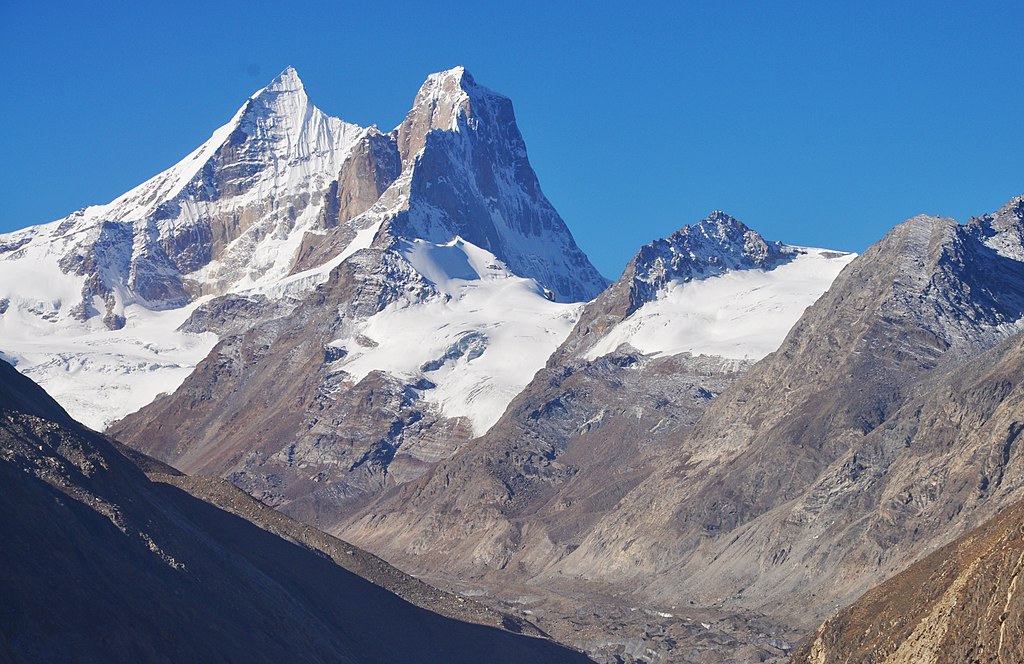GLACIERS, the frozen giants that have long defined the beauty of the Indian Himalayan Region, are melting at rates never seen before, and this is turning into a huge concern in this tranquil expanse. This phenomenon of melting Himalayan glaciers has significant ramifications for both the present and future of India and is not limited to a local environmental issue. It is a worldwide concern.
The Indian Space Research Organisation recently released a series of satellite images captured between 1984 to 2023 that show significant topographic reshaping in a delicately balanced ecosystem. According to ISRO data, Himalayan glaciers have been melting rapidly and leading to sizable expansion of glacial lakes, some of which have as much as doubled in size.
Himalayan glaciers serve as natural reservoirs that hold enormous amounts of freshwater that are necessary for life to exist downstream. However, these glaciers are receding at an alarming rate due to the warming environment, which is being made worse by human activity. This collapse has several serious repercussions, with India being especially susceptible to them.
An urgent risk associated with the melting of Himalayan glaciers is an increased possibility of glacial lake outburst floods (GLOFs). Glacial lakes are formed when glaciers retreat and leave behind depressions. Natural ice and debris dams keep these lakes in their proper locations. But these dams deteriorate with rising temperatures, raising the possibility of disastrous breaches. When a GLOF suddenly releases water, it can cause catastrophic floods downstream that can devastate communities, demolish infrastructure and even kill people.
The Himalayan region is dotted with numerous glaciers and glacial lakes, making GLOFs a looming threat for many communities in India. For instance, the state of Uttarakhand witnessed a tragic example of this in 2013 when flash floods, triggered by a GLOF, ravaged the region, causing widespread devastation.
Beyond the short-term dangers posed by GLOFs, India’s water security may eventually face difficulties due to glacier melting. For millions of people in India, rivers like the Ganges, Brahmaputra and Indus depend on the freshwater provided by the Himalayan glaciers. There will be less water available in the rivers that these glaciers feed when they melt, particularly during the dry seasons.
Depleting freshwater supplies have far-reaching effects. Inadequate irrigation water would have a negative impact on agriculture, which generates millions of jobs and contributes significantly to India’s economy. Reduced crop yields, food shortages and economic instability could result from this, exacerbating already-existing socioeconomic gaps.
Moreover, the already difficult task of getting access to safe drinking water in many regions of the nation will become considerably more difficult. Communities that depend on rivers supplied by Himalayan glaciers for their water supply may see an increase in rivalry and hostilities over dwindling supplies. This might make tensions between and within states worse, making stability and governance even more difficult.
Beyond just threatening water security, the melting of Himalayan glaciers has a negative influence on a variety of ecosystems and exacerbates environmental deterioration. The extinction of Himalayan glaciers threatens endemic species’ existence and biodiversity by upsetting sensitive ecological balances. Elevated-altitude habitats, such alpine meadows and forests, are more susceptible to changes in temperature and precipitation patterns, which can result in the loss of habitat and the extinction of species.
Furthermore, the extensive coastline regions of India are affected by the rise in sea level caused by Himalayan glaciers melting. The effects of climate change, such as coastal erosion, seawater intrusion and more frequent and powerful cyclones, are already being felt by coastal populations. Rising sea levels will put further strain on already difficult situations, causing millions to be uprooted and jeopardising vital infrastructure, such as ports and cities.
A coordinated and expeditious response at several levels is needed to mitigate the risks posed by the melting of Himalayan glaciers. Reducing greenhouse gas emissions is the main goal of mitigation measures in order to stop the globe from getting warmer. India, one of the top emitters of greenhouse gases globally, must play a significant role in advancing climate-resilient growth, embracing sustainable practices, and switching to renewable energy sources.
In order to reduce the effects of Himalayan glaciers melting on populations that are already at risk, adaptation measures are also crucial. This entails putting in place sustainable water management techniques, bolstering early warning systems for GLOFs, and improving the resilience of livelihoods and ecosystems. In order to guarantee sustainable growth, ecological integrity and social equality must be given first priority while building infrastructure, such as dams and reservoirs.
Furthermore, because the problem is transboundary, international cooperation is essential to its resolution. Many nations make up the Himalayan region, and they are all dealing with issues arising from the melting of Himalayan glaciers. To develop coordinated plans for adaptation and resilience-building, as well as to share knowledge, resources and best practices, collaborative efforts are required.
In conclusion, India’s ecology, economy and society are seriously threatened by the melting of Himalayan glaciers. The ramifications of glacier melt are numerous and extensive, ranging from the possibility of devastating floods to the threat of water scarcity and ecological collapse. To protect the Himalayas and guarantee a sustainable future for India and the world, immediate action is required and give.do’s Mission: Clean India’s Environment is trying to do just that. With the help of experts and NGOs, a multi-pronged approach is being adopted to tackle the problem. To support this initiative:

Choosing to tread the proverbial road less travelled, Ramon embarked upon a career in journalism and spent over 8 years working for various media organisations. A deeper calling to create a sustainable impact in the lives of the less fortunate compelled him to join the social sector. Ramon is a minimalist at heart and an explorer in spirit.
Discover more from
Subscribe to get the latest posts sent to your email.

